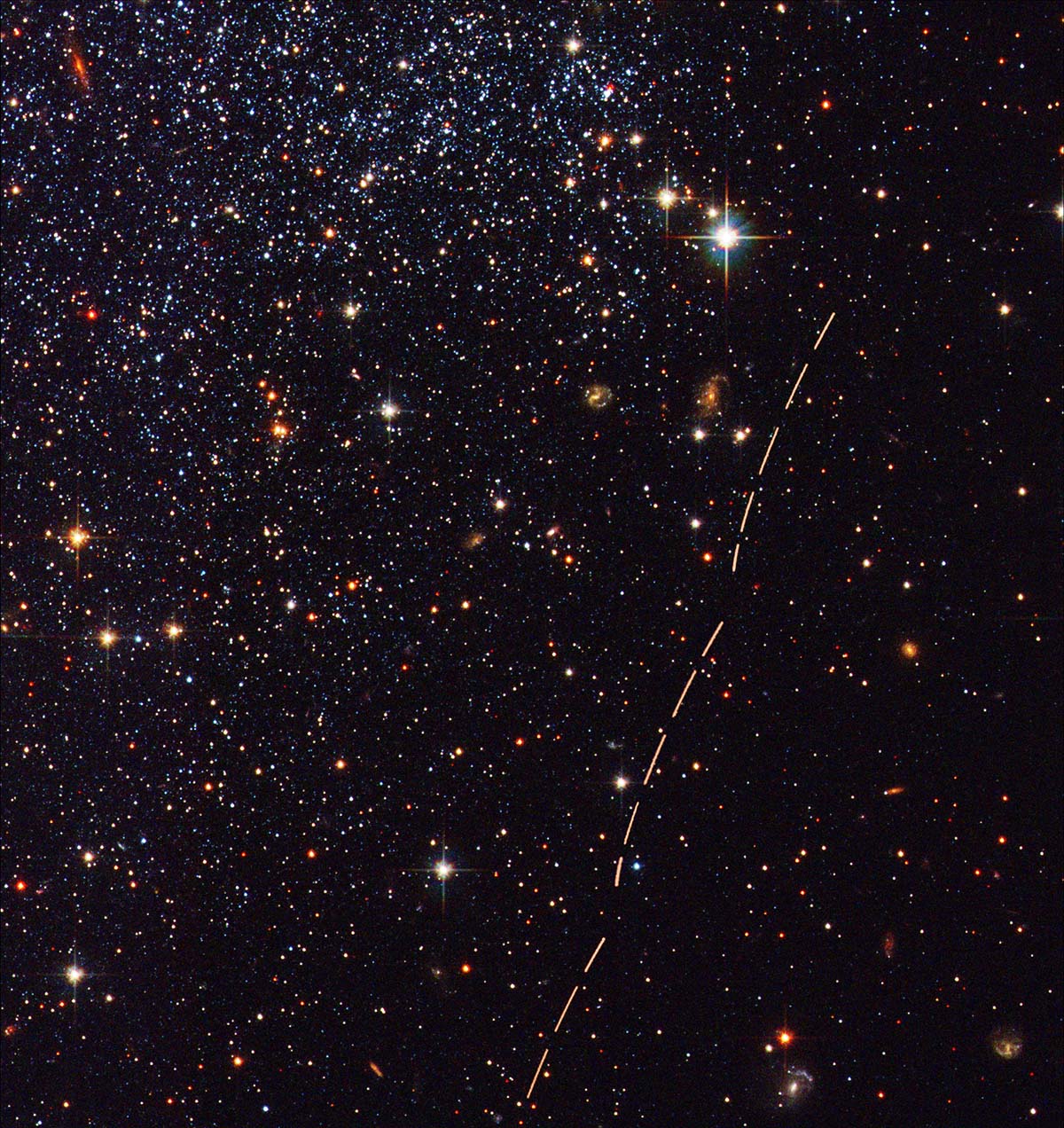
About This Image
While analyzing NASA Hubble Space Telescope images of the Sagittarius dwarf irregular galaxy (SagDIG), an international team of astronomers led by Simone Marchi, Yazan Momany, and Luigi Bedin were surprised to see the trail of a faint asteroid that had drifted across the field of view during the exposures. The trail is seen as a series of 13 reddish arcs on the right in this August 2003 Advanced Camera for Surveys image.
As the Hubble telescope orbits around the Earth, and the Earth moves around the Sun, a nearby asteroid in our solar system will appear to move with respect to the vastly more distant background stars, due to an effect called parallax. It is somewhat similar to the effect you see from a moving car, in which trees by the side of the road appear to be moving much more rapidly than background objects at much larger distances. If the Hubble exposure were a continuous one, the asteroid trail would appear like a continuous wavy line. However, the exposure with Hubble's camera was actually broken up into more than a dozen separate exposures. After each exposure, the camera's shutter was closed while the image was transferred from the electronic detector into the camera's computer memory; this accounts for the many interruptions in the asteroid's trail.
Since the trajectory of the Hubble spacecraft around the Earth is known very accurately, it is possible to triangulate the distance to the asteroid in a manner similar to that used by terrestrial surveyors. It turns out to be a previously unknown asteroid, located 169 million miles from Earth at the time of observation. The distance places the new object, most likely, in the main asteroid belt, lying between the orbits of Mars and Jupiter. Based on the observed brightness of the asteroid, the astronomers estimate that it has a diameter of about 1.5 miles.
The brightest stars in the picture (easily distinguished by the spikes radiating from their images, produced by optical effects within the telescope), are foreground stars lying within our own Milky Way galaxy. Their distances from Earth are typically a few thousand light-years. The faint, bluish SagDIG stars lie at about 3.5 million light-years (1.1 Megaparsecs) from us. Lastly, background galaxies (reddish/brown extended objects with spiral arms and halos) are located even further beyond SagDIG at several tens of millions parsecs away. There is thus a vast range of distances among the objects visible in this photo, ranging from about 169 million miles for the asteroid, up to many quadrillions of miles for the faint, small galaxies.
The team reported their science findings about the asteroid in the October 2004 issue of New Astronomy.






















No hay comentarios:
Publicar un comentario